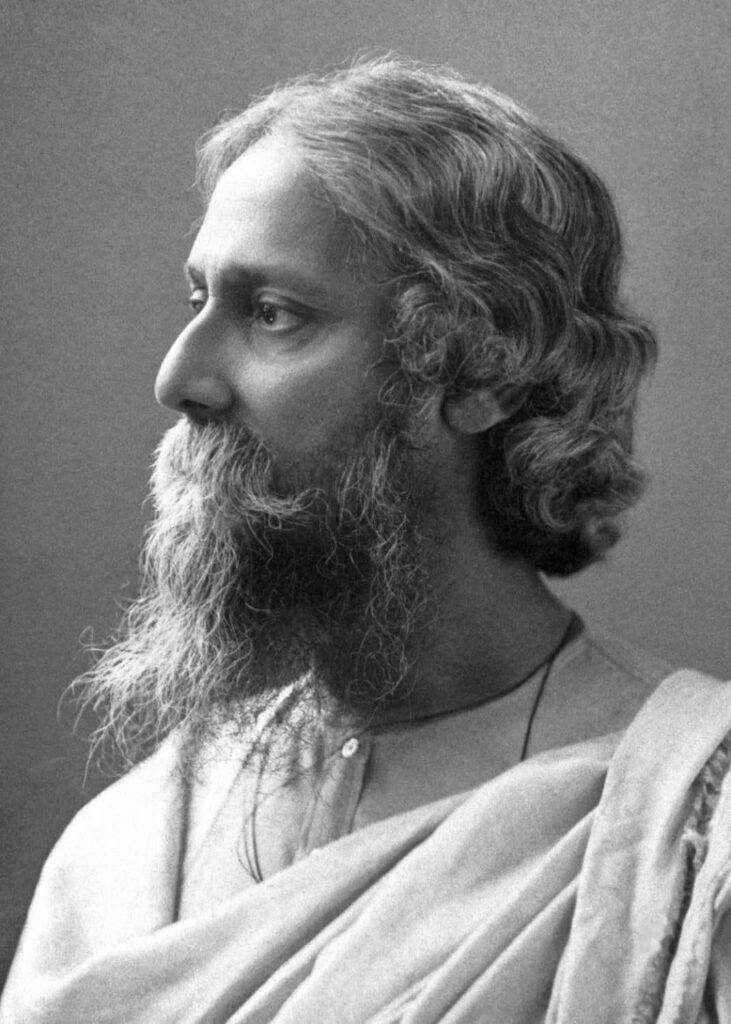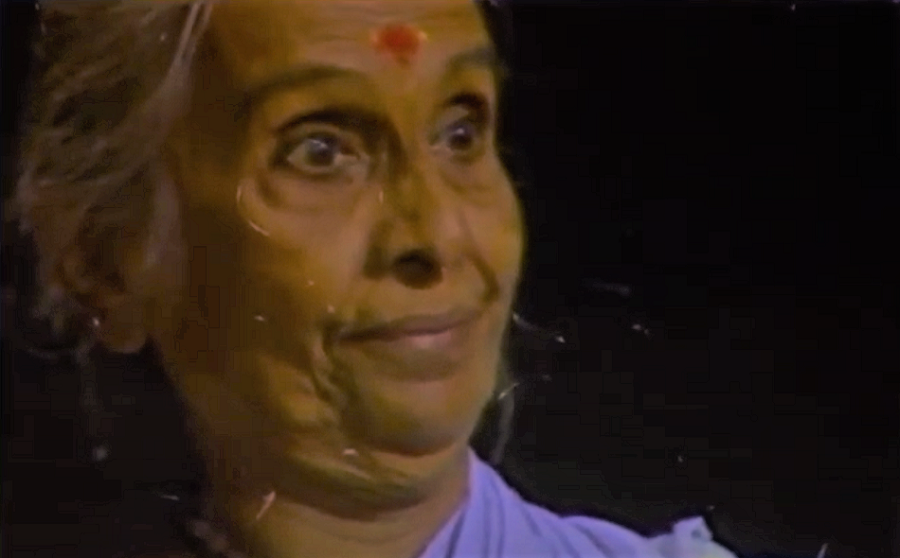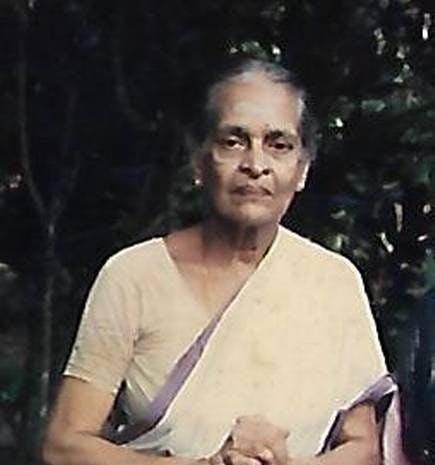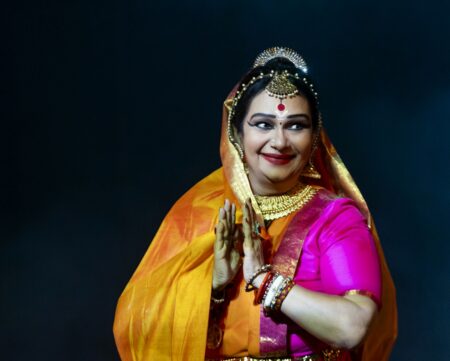It was the loyalty to the king that compelled Thankamani’s parents to enroll her in Kalamandalam.
We learnt about the efforts of Vallathol Narayana Menon and his team in reviving Mohiniyattam in our previous article. Vallathol had to spend a lot of time and effort to convince Kalyaniyamma, a teacher of Mohiniyattam to initiate a Kalari or a learning centre at Kalamandalam. When Kalyaniyamma agreed to come to Kalamandalam there was finally some hope that Mohiniyattam would regain its glorious reputation and patrons.
Running from pillar to post and creating avenues to attract Mohiniyattam tutors was not sufficient. Soon, Vallathol realized that acquiring a teacher to teach Mohiniyattam solved only part of the problem. Finding students from reputed families to dance was a larger issue to solve. None of the paterfamilias was ready to send the girls from their families to learn Mohiniyattam. For several months Vallathol and his team went in search of students who could be tutored in Mohiniyattam at Kalamandalam. It didn’t yield any results.
Pantaluvittukar who stayed in the southwest part of Manakulam Kovilakam (a large estate belonging to a royal) were tenants. Mukunda Raja and the others compelled the family to send Thankamani, Pantalattu Govindan Nair’s daughter, to learn dance. The tenants, obviously in reverence to the owners, could not refuse such a request from the ‘Kovilakam Raja’. And thus, Thankamani, a tenant’s daughter, become the first and the only student of Mohiniyattam at Kalamandalam.
The path, however, wasn’t easy for Thankamani. Suffering ridicule and insult from the other members of the family, she continued to study Mohiniyattam. It was, in fact, not her interest in learning dance, but her loyalty to the Manakularm Raja-s that enabled her to overcome these humiliations. The Mohiniyattakalari started at the beginning of 1932 at Kalamandalarm and for nearly three years it consisted of just one teacher and one student.
In 1933, Kalyaniyamma had to leave for Bombay as part of the Kathakaḷi dance troupe along with Ragini Devi (born Esther Luella Sherman). Devi was the first foreign student, an American, learning Kathakali at Kalamandalam. Kalyaniyamma and the maddaḷam player Madhava Warrier were not keen on leaving Kalamandalam. However, this reluctant trip they undertook turned out to be a blessing for Mohiniyattam. Whoever attended Kalyaniyamma’s performance were in for a treat. She received high praise for her enchanting beauty and her Mohiniyattam dance rendition. Kalyaniamma was impressed with the reception and after successfully performing in Bombay for a few, months she returned to Kalamandalam and continued to teach Thankamani with a renewed rigour.
The reception received during Kalyaniamma was one of the turning points of Mohiniyattam’s revival. Continuing his efforts to popularise the dance art form Vallathol, in 1934, invited scholar V. Krishnan Thampi, also the author of Tatakavadham and Vikramorvasiyam Attakatha-s (stories meant for dance-dramas), to Kalamandalam to view the performances of Kalyaniyamma and Thankamani.
Krishnan Thampi noted a few suggestions, and some delightful changes were incorporated in the costume and hairstyle of the dancers.
Mohiniyattam at Shantiniketan
In 1935, a young artist and a Kathakali student, Champakkulam Gopinathan, joined the troupe of Ragini Devi and later married Thankamani with the consent of her family. Champakkulam Goptinathan, in due course, became a celebrated Kathakaḷi dancer, came to be later known as Guru Gopinath.

Perhaps very few dance forms have seen the kind of ups and downs as Mohiniyattam. The Mohiniyattakalari had to shut doors as its only student Thankamani left Kalamandalam. After Thankamani’s departure, Vallathol and Mukunda Raja tried their level best to recruit some new students for the Mōhiniyāṭṭakkaḷari, but their efforts failed. During that time renowned poet Rabindranath Tagore visit Kalamaṇḍalam. He watched Mohiniyaṭṭam performance by Kalyaniyamma. The poignant expressions and the lasya movements of Mohiniyaṭṭam attracted him very much and he expressed his wish to induct Kalyaniyamma as a teacher for Mohiniyaṭṭam at Shantiniketan. Accordingly, Vallathol sent Kalyaniyamma along with Madhava Warrier to the prestigious institution. But as fate would have it, her services at Shantiniketan came to an abrupt end as after three years this marvel of a dancer passed away.

With her gracious presence no more the curtain was wrung down on Mohiniyaṭṭam Warrier returned to Kalamaṇḍalam, heavy-hearted. When Kalyaniyamma left for Shantiniketan and there with no student to learn Mohiniyaṭṭam, Naṭṭuvan Koraṭṭikkara Appuredatt Krishna Panicker also bid goodbye to Kalamaṇḍalam. From 1935 onwards, for two years, the Mohiniyaṭṭakkaḷari was on the downturn and withered into oblivion. Thinking that Mohiniyaṭṭam would not survive Vallathol became distressed. But his dynamic personality did not give up and he went in search of Krishna Panicker; after much coaxing, he could bring back Krishna Panicker and the Kaḷari was renewed in the year 1937. Along with Krishna Panicker, Vallathol could rope in a woman named Ramankaṇṭatt Vaḷappiḷ Madhaviamma as a teacher. But Madhaviamma was not able to perform on stage like Kalyaniyamma because she was fifty-six years old. However, along with Krishna Panicker she trained the students. Vallathol used to attend the Mohiniyaṭṭakalari very often and give them instructions on ‘rasa-s’ and ‘mudra-s’.
Various styles in Mohiniyattam
He diligently observed even the minute details of the performances and this inspired the teachers to chisel and polish their body movements and expressions and excel themselves. Gradually, Mohiniyaṭṭam was aesthetically revived. More and more girls woke up to the music of the anklets of the beautiful world that Mohiniyaṭṭam following the poet’s imagination unravelled. Like in Kathakaḷi, a Kalamaṇḍalam style was being formulated in Mohiniyaṭṭam too. Lakshmi from Thalasseri, Atavanaṭṭe Karinnamaṇṇa Kalyanikutty (who later came to be known as Kalamaṇḍalam Kalyanikuttiyamma), and three other students from Tirur, were taught in this style.

Among these, Kalyanikuttiyamma was the only dancer who continued till the end of her life. She brought about many new practices into this first style of Mohiniyaṭṭam dance which was the long-standing dream of Vallathol and breathed a new life into it. She could train many young students along the length and breadth of Kerala and thus transformed this new style of dancing. This style is known as ‘Kalyanikuttiyamma Style’, the first style revived in Kalamandalam by Vallathol.
The Kalamandalam first style 1st stage (1932-35):
Guru – Orikkaledath Kalyaniyamma,
Disciple – Kalamaṇḍalam Thankamani Gopinath.
Kalamandalam first style 2nd stage (1937-1940):
Gurus: Ramankaṇṭattụ Vaḷappil Madhaviamma, Koraṭṭikkara
Appuredath Krishna Panicker
Disciples: Kalamaṇḍalam Kalyanikuttiyamma, Lakshmiamma, three pupils from Tirur.
Practitioners of this style:
Sridevi Rajan, Kala Vijayan (daughters of Kalyanikuttiyamma), Smita Rajan and Sandhya (her granddaughters) are also following this tradition. Nirmala Paniker, Tara Nedungadi Rajkumar, Mayadevi Kurup, Deepthi Omcheri Bhalla, Syamala Surendran and Gita Radhakrishnan are the other illustrious disciples of Kalyanikuttiyamma.
When the first style started to flourish and extend beyond the bounds of Kalamaṇḍalam through Kalyanikuttiyamma, Vallathol became happy. Kalyanikuttiyamma often used to reminiscence how once Vallathol called her and expressed his satisfaction and asked her to carry on with the work she was doing to develop Mohiniyaṭṭam into a world-class art form. But the deep desire to restart a Kaḷari for Mohiniyaṭṭam at Kalamaṇḍalam still endured. After ten years, in1950, the second phase commenced. The teachers of Pazhayannur were the disciples of Guru Krishna Panicker. But Chinnammuamma, who reached Kalamaṇḍalam in 1950 to renew the Kaḷari, was the disciple of another Guru named Kaḷamoḻi Krishna Menon. Thus, a second style gained prominence in Kalamaṇḍalam; the Kaḷamoli Krishna Menon style. Guru Chinnuamma who was performing with a Mohiniyaṭṭam group till the age of sixteen left the arena of dance after her marriage and was leading a contented family life. According to Krishnan Nambuthiri, Chinnuamma was with the troupe till she was thirteen and then got married and went away.
(Assisted by Sreekanth Janardhanan)
Click here for more on the series. Write to us at [email protected]




